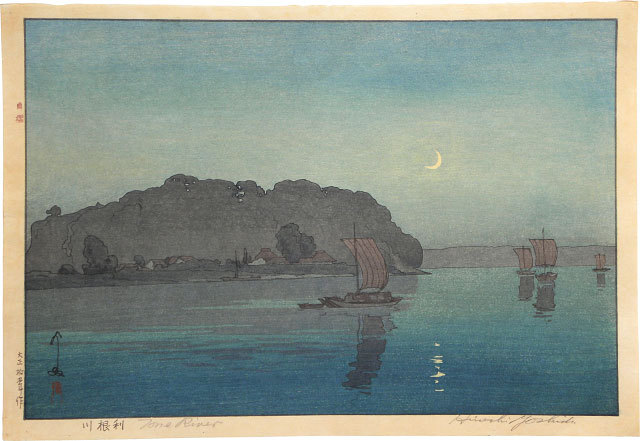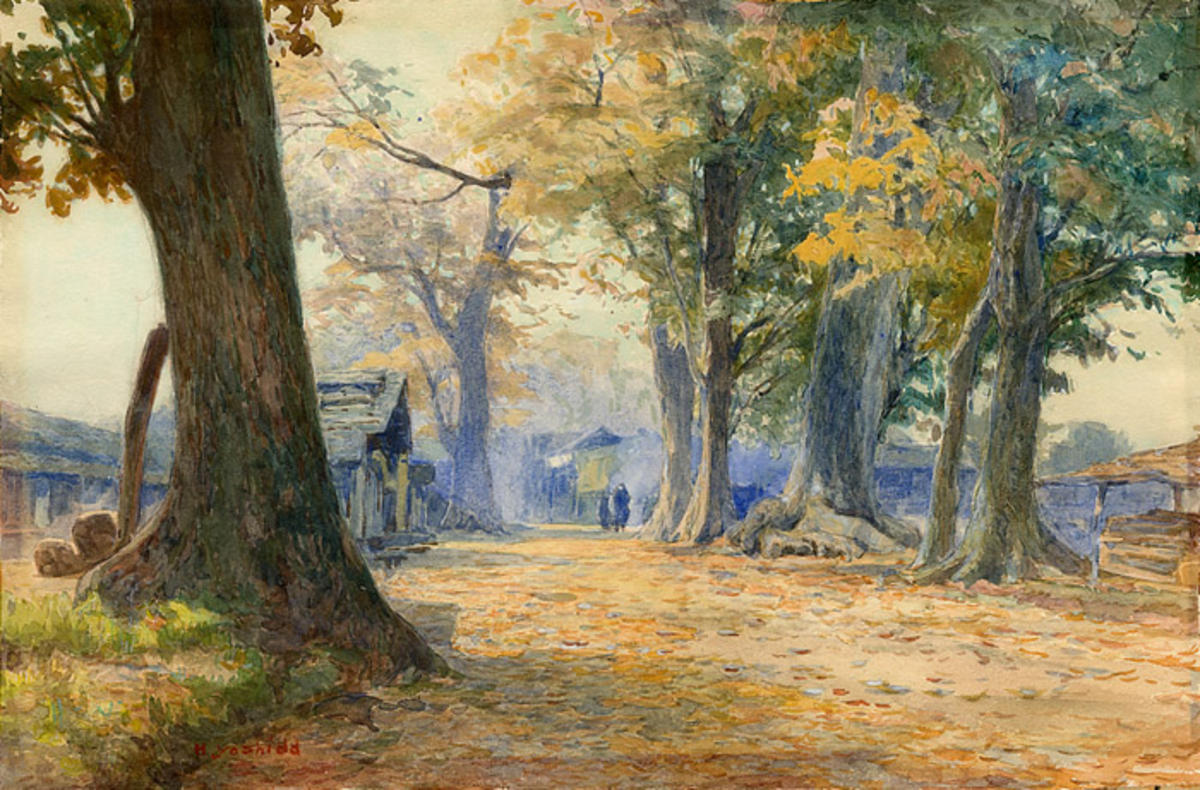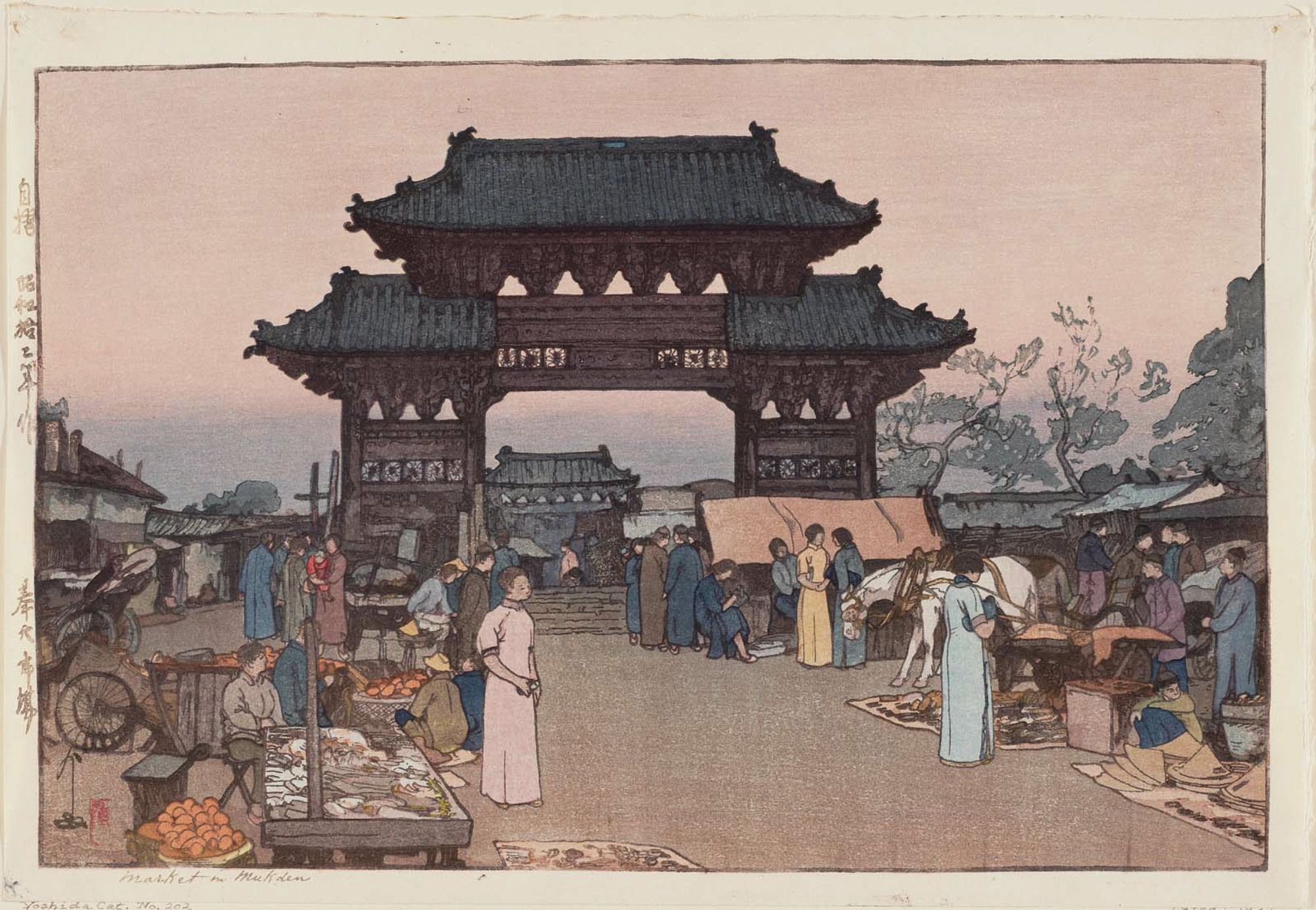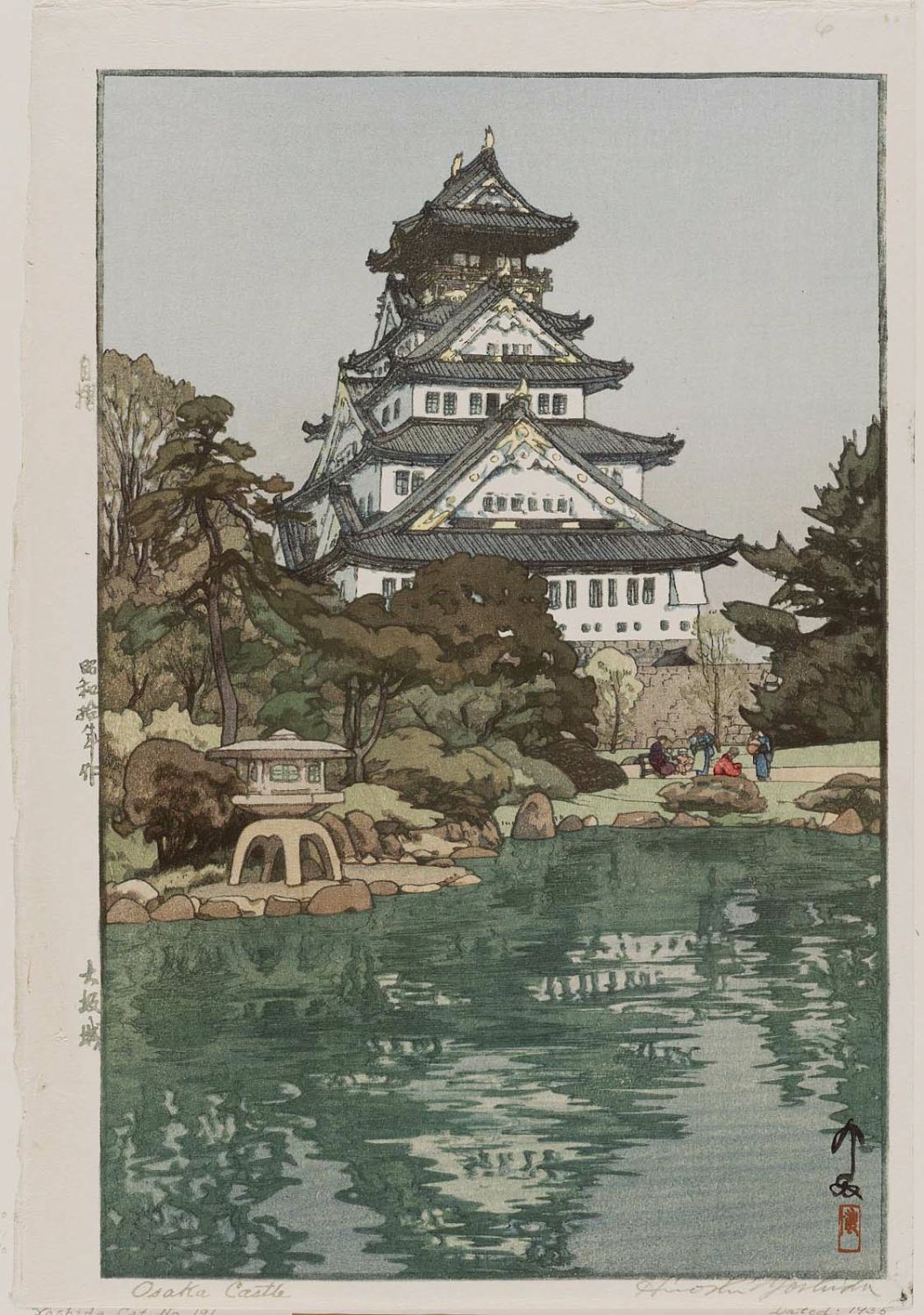jpwoodblocks has compiled the most complete listing of the great Japanese Woodblock print Shin Hanga artist, Hiroshi Yoshida, right here for your browsing. This work aims to compile museum works and accurate listings across the web to compile more than 500 original works for Hiroshi Yoshida.
Please search by Name, Series, Date, and please get in touch if you need any help identifying your Hiroshi Yoshida print – we are happy to help. Also feel free to browse the Hiroshi Yoshida original prints we have for sale by clicking here.
Biography
Hiroshi Yoshida (born Hiroshi Ueda) was born in the city of Kurume, Fukuoka, in Kyushu, on September 19, 1876.[1] He showed an early aptitude for art fostered by his adoptive father, a teacher of painting in the public schools. At age 19 he was sent to Kyoto to study under Tamura Shoryu, a well known teacher of western style painting. He then studied under Koyama Shōtarō, in Tokyo, for another three years.
In 1899, Yoshida had his first American exhibition at Detroit Museum of Art (now Detroit Institute of Art). He then traveled to Boston, Washington, D.C., Providence and Europe. In 1920, Yoshida presented his first woodcut at the Watanabe Print Workshop, organized by Watanabe Shōzaburō (1885–1962), publisher and advocate of the shin-hanga movement. However, Yoshida’s collaboration with Watanabe was short partly due to Watanabe’s shop burning down because of the Great Kanto earthquake on September 1, 1923.
In 1925, he hired a group of professional carvers and printers, and established his own studio. Prints were made under his close supervision. Yoshida combined the ukiyo-e collaborative system with the sōsaku-hanga principle of “artist’s prints”, and formed a third school, separating himself from the shin-hanga and sōsaku-hanga movement. His art is used all around the world, wanting to inspire young artists to follow their hearts and to teach them that they should do what they’d like, even if nobody else in the room agrees. Hiroshi’s art is used with clear credit to his name, and a small summary about his life.
At the age of 73, Yoshida took his last sketching trip to Izu and Nagaoka and painted his last works The Sea of Western Izu and The Mountains of Izu. He became sick on the trip and returned to Tokyo where he died April 5, 1950 at his home.[2] His tomb is in the grounds of the Ryuun-in, in Koishikawa, Tokyo.[3]
Artistic style
Hiroshi Yoshida was trained in the Western oil painting tradition, which was adopted in Japan during the Meiji period. Yoshida often used the same blocks and varied the colour to suggest different moods. The best example of such is Sailing Boats in 1921.
Yoshida’s extensive travel and acquaintance with Americans influenced his art considerably. In 1931 a series of prints depicting scenes from India, Pakistan, Afghanistan, and Singapore was published. Six of these were views of the Taj Mahal in different moods and colors.
His works are held in several museums worldwide, including the British Museum,[4] the Toledo Museum of Art,[5] the Brooklyn Museum,[6] the Harvard Art Museums,[7] the Saint Louis Art Museum,[8] the Dallas Museum of Art,[9] the University of Michigan Museum of Art,[10] the Clark Art Institute,[11] the Portland Art Museum,[12] the Indianapolis Museum of Art,[13] the Carnegie Museum of Art,[14] the Tokyo Fuji Art Museum,[15] the Detroit Institute of Arts,[16] the Seattle Art Museum,[17] the Museum of Fine Arts, Boston,[18] the Fine Arts Museum of San Francisco,[19] the Davis Museum at Wellesley College,[20] and the Mount Holyoke College Art Museum.[21]






![Hiroshi Yoshida - Fishes of Honolulu (Honoruru suizokukan [Honolulu Aquarium])](https://jpwoodblocks.com/wp-content/uploads/2022/10/ec2efa5d-7563-434b-a7d2-c6b88f58bd46.jpeg)

